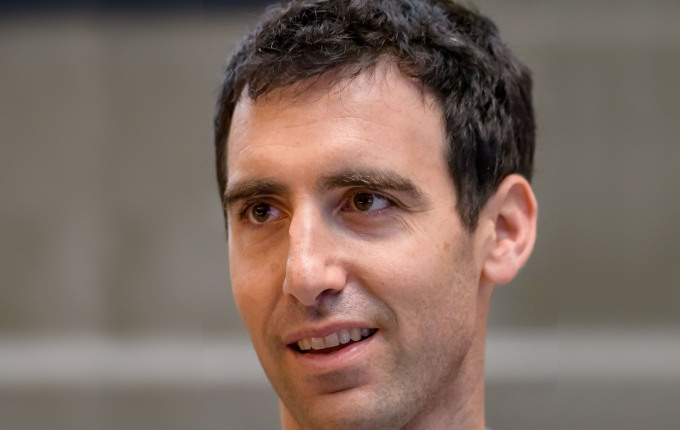Machine learning has come a long way since IBM employee Arthur Samuel first coined the term in 1959. But does it make investing easier?
Machine learning has been making great strides in recent years and with the release of ChatGPT the possibilities seem endless.
But machine learning has produced mixed results at best when applied to investing.
A case in point was the hedge fund Quantopian, which tried to find alpha-generating trading algorithms through crowdsourcing.
It was established in 2011 and raised almost US$50 million to kick off its strategies with. Over the years, the fund amassed more money, based on the optimism towards the possibilities of artificial intelligence, but in 2020 the firm had to close shop and returned funds to investors due to the underperformance of its investment strategies.

There are a lot of pieces to building a trading system. First you have to find alpha, [but] then you have to do portfolio construction. Then you have to figure out how do you actually trade the signal that you have found so that you don't move the … market. And for each of those are separate problems
Machine-learning platform Kaggle has hosted several competitions by investment firms to solve machine-learning problems over the years, including by investment organisations such as Two Sigma, Jane Street Capital and Optiver.
And one of the key issues with running investment-orientated problems on such platforms is that in order to find out whether an algorithm works, you need to incorporate many functions that within a real-life investment organisation would be managed by individual teams.
“There are a lot of pieces to building a trading system,” Anthony Goldbloom, Founder of Kaggle and Investment Partner at AIX Ventures, says in a recent interview for the [i3] Podcast series.
“First you have to find alpha, [but] then you have to do portfolio construction. Then you have to figure out how do you actually trade the signal that you have found so that you don’t move the … market. And for each of those are separate problems.
“At a fund you would have a team for each of these different parts,” he says.
Adversarial Situations
A key part to why investment problems are so hard is because they are set in what Goldbloom refers to as “adversarial situations”. “You’re trying to find alpha, but so are other people and each impacts the market,” he says.
And as each player impacts the market, the circumstances and conditions constantly change.
Goldbloom illustrates his point with another adversarial situation: fraud.
“Fraud is another adversarial [situation]. You figure out how to detect a form of credit card fraud, but then the fraudsters come up with other approaches. These are all difficult in a Kaggle set-up because what happens is you run a challenge, data was frozen for three months or something like that, then you get the result and you put it into production,” he says.
“In the meantime, it might be the case that the approach to fraud had changed.”
Investors also tend to operate in a constantly changing environment and so machine learning has limited usefulness in producing alpha.
Where funds did better was when they didn’t try to submit a full end-to-end trading problem, but rather put forward only a small piece of the pipeline.

One thing they have a voracious appetite for is very strong mathematical talent. So one motivation was putting out problems that looked a bit like a problem you might solve at a Two Sigma or a Jane Street
What some of the big-name hedge funds put forward was not even always an actual problem, but more a mathematical test intended to act as a recruitment tool.
“One thing they have a voracious appetite for is very strong mathematical talent. So one motivation was putting out problems that looked a bit like a problem you might solve at a Two Sigma or a Jane Street,” Goldbloom says.
“And if you do well on that problem, then you might, as well as winning a prize, also receive a job offer. That was one motivation.”
Besides, often in Kaggle competitions the deciding factor in winning wasn’t necessarily mathematical fluency, but creativity – the ability to come up with new applications for machine-learning techniques.
Goldbloom gives an example of a competition where it wanted to see whether machine learning could help in identifying which second-hand cars were the best value for money.
“We had a competition to predict which second-hand cars sold at an auction would be good buys and which ones would be lemons. And it turned out one of the competition-winning insights was that car colour had a big impact,” he says.
“What they found was that unusual colour cars were more likely to be reliable than more standard colour cars. And their hypothesis in testing that was that if you’re the buyer of an unusual colour car, take an orange car as an example, you’re probably an enthusiast.
“Therefore, you look after the car a bit better. And so by the time it gets sold at a second- hand auction, it’s in better condition than a standard colour car. That’s an example of the kind of thing Kaggle is very good at.”
To listen to the full podcast, please click here.
__________
[i3] Insights is the official educational bulletin of the Investment Innovation Institute [i3]. It covers major trends and innovations in institutional investing, providing independent and thought-provoking content about pension funds, insurance companies and sovereign wealth funds across the globe.


